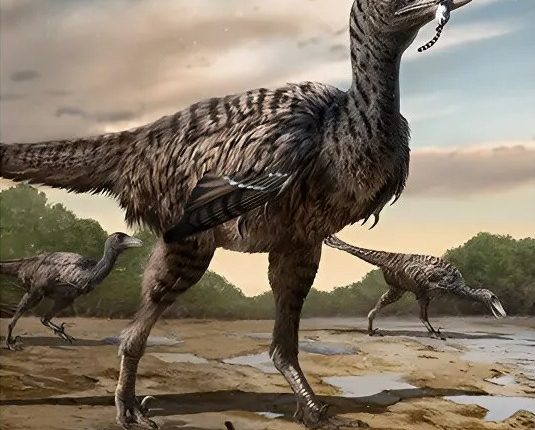TRACKS belonging to a giant raptor that would’ve towered over its Jurassic Park cousins have been found.
The mammoth dinosaur is believed to be as long as 16.4 feet (or 5 meters).
Its sizeable tracks were found in China’s Fujian Province, and would’ve lived tens of millions of years ago.
Many raptors were small – so scientists say this discovery helps to show that some species could grow to be gigantic.
“When people think of raptor dinosaurs, they most likely think of those in the Jurassic Park movies—human-sized, muscly, aggressive hunters,” said Dr Anthony Romilio, a palaeontologist at The University of Queensland’s Dinosaur Lab.
“But these tracks were left by a much slimmer and brainier group in the Velociraptor family known as Troodontids, which emerged in the late Jurassic period around 95 million years ago.
“This raptor was about five meters long with 1.8 meter-long legs, far exceeding the size of the raptors depicted in Jurassic Park.
“Imagine something like that coming at you at full speed!”
FEET FIRST!
The tracks were found in 2020 by an international team of researchers exploring dinosaur footprints.
These specific tracks were two-toed, and were described as “distinct in shape” and “unique” by researchers.
Most read in Science
It gave scientists a big clue as to the mammoth size of the long-dead creatures, now known as Fujianipus yingliangi.
“We found this track type is distinct in shape, making it quite unique,” Dr Romilio explained.
“The concept of large Troodontids has only recently emerged in the palaeontological community.
“Bones discovered in Alaska hint at a trend towards gigantism near the ancient Arctic circle, an area with potentially less species competition due to extended periods of winter darkness.
“But our findings suggest these raptor giants roamed much further south and were more widely dispersed.
“Interestingly, some of our research team has also worked on the world’s tiniest dinosaur footprints – raptor tracks in South Korea that are just one centimeter long.
“It just goes to show the incredible size range among raptor dinosaurs, highlighting their adaptability and ecological diversity.”
Troodontids were bird-like dinosaurs that were believed to have largely been predatory carnivores.
READ MORE SUN STORIES
They’re described as having unusually long legs, particularly large brains, and big eyes with impressive binocular vision.
Why did the dinosaurs die out?
Here’s what you need to know…
- The dinosaur wipe-out was a sudden mass extinction event on Earth
- It wiped out roughly three-quarters of our planet’s plant and animal species around 66million years ago
- This event marked the end of the Cretaceous period, and opened the Cenozoic Era, which we’re still in today
- Scientists generally believe that a massive comet or asteroid around 9 miles wide crashed into Earth, devastating the planet
- This impact is said to have sparked a lingering “impact winter”, severely harming plant life and the food chain that relied on it
- More recent research suggests that this impact “ignited” major volcanic activity, which also led to the wiping-out of life
- Some research has suggested that dinosaur numbers were already declining due to climate changes at the time
- But a study published in March 2019 claims that dinosaurs were likely “thriving” before the extinction event
The research was published in the journal iScience.












